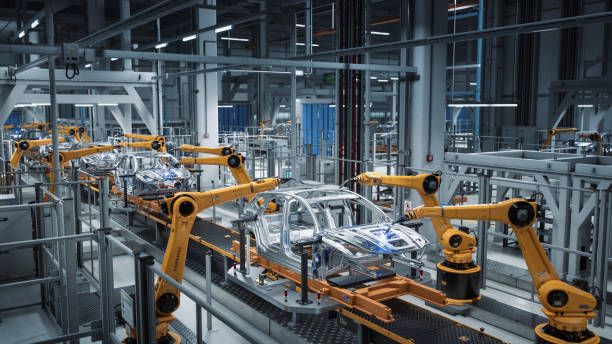Maximizing Efficiency: Unveiling the Dynamics of a Production Line
In the realm of modern manufacturing, a production line stands tall as the epitome of efficiency and streamlined operations. This article aims to provide an in-depth exploration of production lines, their integral components, and the significant role they play across various industries.

Section 1: Understanding the Purpose
At its core, a production line serves as a sequential arrangement of machinery, equipment, and skilled workers working in harmony to transform raw materials into finished products. The primary objectives of a production line are as follows:
Boosting productivity: By minimizing downtime and optimizing resource utilization, a production line ensures higher output and maximizes productivity.
Ensuring consistency: Standardizing processes within the line guarantees uniformity in product quality, meeting customer expectations consistently.
Enhancing efficiency: A production line eliminates wastage, identifies and overcomes bottlenecks, and improves overall operational efficiency.

Section 2: Key Components Explored
To comprehend the inner workings of a production line, it's essential to shed light on its integral components, including:
Conveyor systems: Facilitating the seamless movement of materials or products between workstations, conveyor systems minimize manual handling and promote a smooth workflow.
Automated machinery: Specialized machines take center stage in performing specific tasks like assembly, packaging, or quality inspection with precision and speed.
Workstations: These designated areas provide workers with the necessary tools, equipment, and resources to carry out their assigned tasks efficiently.
Control systems: Overseeing the production line, control systems monitor and regulate the functioning of machinery, ensuring synchronization and optimal productivity.

Section 3: Unveiling the Types
Different industries employ specific types of production lines tailored to their unique requirements, including:
Continuous flow lines: Ideal for high-volume production of standardized goods, these lines operate continuously with minimal interruptions, maximizing output.
Batch production lines: These lines cater to the production of goods in specific quantities or batches, offering flexibility in customization based on customer demands.
Cellular manufacturing lines: Adopting the concept of self-contained work cells, these lines organize tasks to minimize material movement and optimize efficiency.
Just-in-time lines: By synchronizing production with customer demand, these lines aim to minimize inventory, reduce waste, and optimize storage costs.
A production line serves as the backbone of modern manufacturing systems, enabling businesses to achieve heightened efficiency, maintain consistent quality, and increase overall productivity. By gaining an in-depth understanding of the purpose, key components, and varied types of production lines, companies can unlock their full potential and gain a competitive edge in the dynamic market landscape.
Relative News












